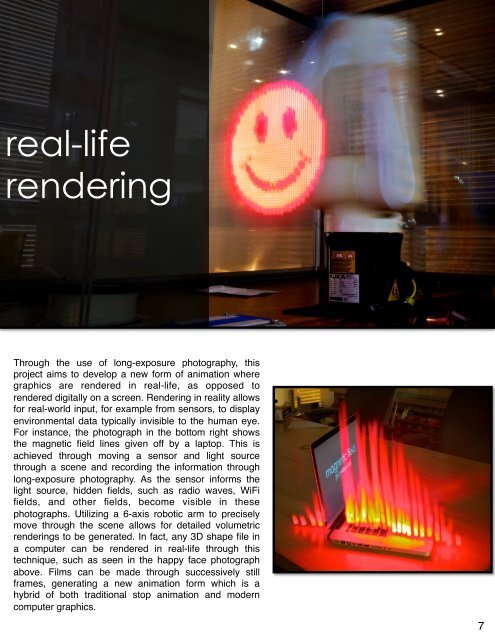design brief - Steven Keating's
design brief - Steven Keating's
design brief - Steven Keating's
You also want an ePaper? Increase the reach of your titles
YUMPU automatically turns print PDFs into web optimized ePapers that Google loves.
eal-life<br />
rendering<br />
Through the use of long-exposure photography, this<br />
project aims to develop a new form of animation where<br />
graphics are rendered in real-life, as opposed to<br />
rendered digitally on a screen. Rendering in reality allows<br />
for real-world input, for example from sensors, to display<br />
environmental data typically invisible to the human eye.<br />
For instance, the photograph in the bottom right shows<br />
the magnetic field lines given off by a laptop. This is<br />
achieved through moving a sensor and light source<br />
through a scene and recording the information through<br />
long-exposure photography. As the sensor informs the<br />
light source, hidden fields, such as radio waves, WiFi<br />
fields, and other fields, become visible in these<br />
photographs. Utilizing a 6-axis robotic arm to precisely<br />
move through the scene allows for detailed volumetric<br />
renderings to be generated. In fact, any 3D shape file in<br />
a computer can be rendered in real-life through this<br />
technique, such as seen in the happy face photograph<br />
above. Films can be made through successively still<br />
frames, generating a new animation form which is a<br />
hybrid of both traditional stop animation and modern<br />
computer graphics.<br />
7


